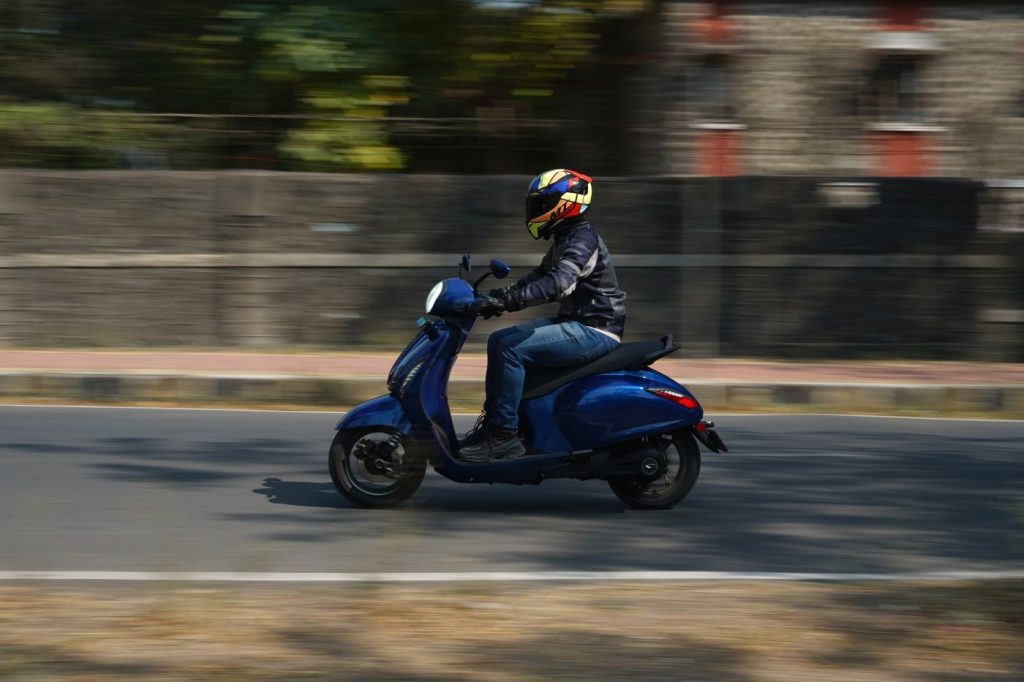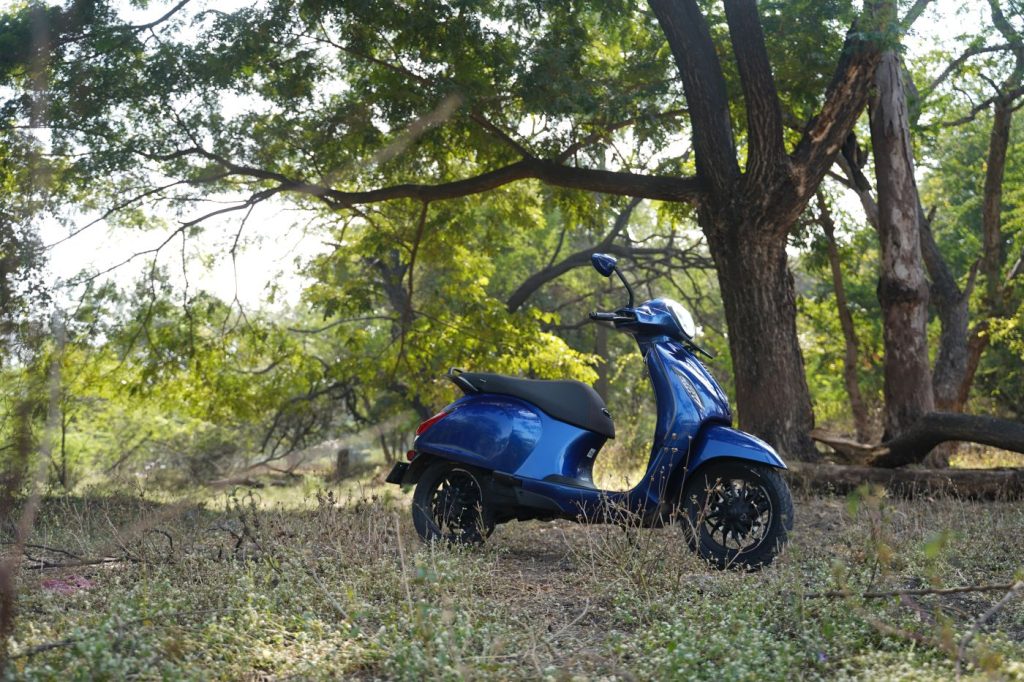Bajaj revived the name “Chetak” after a 15-year gap in 2020 with the launch of the new Chetak in electric avatar. The scooter got a mid-life update for 2024 and we rode it to find out how it feels

Story: Charan Karthik
Photography: Apurva Ambep
“Chetak” is a name that evokes nostalgia. Personally speaking, I associate that name with an old uncle of mine hunched over the handlebar riding around a sleepy town on his scooter with the old white-on-black number-plates, a cloud of smoke being belched by the exhaust. A two-stroke internal combustion engine with a manual gearbox, a split seat, a spare wheel, and a rear brake pedal. These are things that you cannot find on a scooter in this day and age. What you will find, instead, is an electric motor, Spotify playback, and a reverse mode. Yes, that is what evolution does to a manufacturing company (or shall I say industry?) in five decades.
First things first. The Chetak is a very elegant and beautiful scooter. In a world of aggressive Ather 450s and roundish Ola S1s, it is a scooter that sits pretty, especially in the Indigo Blue colour with those beautiful daytime running lights (DRL) up front.

The 2024 Chetak comes in two variants: the Premium and the Urbane. I had the chance of riding the Premium variant equipped with the five-inch colour TFT display, dark grey trim accents, and reverse mode as standard. The under-seat storage is now four litres larger than the old one. Also available was the optional that consists of a Sport mode, sequential blinkers, hill hold, Bluetooth connectivity, turn-by-turn navigation, music controls, display themes, call and message notifications. The optional TecPac is an additional Rs 9,000 over the Premium variant and has a validity of five years. It can also be retrofitted by owners within a year of purchase.

The Chetak Premium comes with a slightly larger 3.2-kWh battery pack as compared to the previous 2.9-kWh one, thus boosting the range to a claimed 126 kilometres. Also present is an 800-watt charger that takes four and a half hours to charge the scooter from zero to 100 per cent. The charger fits neatly inside the 5.5-litre storage/glove box up front. It continues to get the same electric motor that puts out a peak 4.2 kW (5.7 hp) and 20 Nm of torque while the continuous output is 4.0 kW (5.4 hp) and 10 Nm of torque.
Getting down to the riding part, the scooter powers up with a single press of the ignition/lock button and moves with another press of the D button while holding the rear brake. The Chetak Premium has two modes: eco and sport. I drove in both and there is a noticeable difference in acceleration. Initial off-the-line pickup was linear with speed building up gradually. I hit the indicated top speed of 73 km/h fairly quickly, although the suspension was slightly on the stiffer side, which resulted into the minor bumps and irregularities on the road being felt on the handlebar. This is not a scooter to be ridden hurriedly; it likes to take its time and, above the speed of 60 km/h, the pillion rider was more comfortable than I was. The ground clearance of 160 millimetres is just enough for the city and the scooter handled all the speed-humps effortlessly.
As for cornering, I hit a few curves where I found the scooter to be surprisingly planted; it even handled mid-corner bumps and potholes very well. Stable. The turning radius is just right, so U-turns on single lanes were taken like a breeze.

Next up, the brakes. The front brake’s performance was adequate and the single disc did a flawless job throughout our ride. The scooter felt sure-footed. The rear, however, was average at best, as I got a numb and muted feedback from the lever.
Comfort was always a plus point in respect of the Chetak and it continues to be that way with an appropriately positioned handlebar and seats that are large enough and well-padded for both the rider and the pillion. The space offered on the Chetak, just like its predecessor, is fantastic. I had enough room to comfortably wiggle my feet around on the footboard.
I am used to riding a Vespa VXL 150 that pulls fine even after 100 km/h. I am also used to the occasional pop from the exhaust after the said pull. Yes, it returns less than 25 kilometres per litre and takes a kick or two to start up in the winters, but I would still choose that over music playbacks and reverse modes. I would stick to the Vespa, that’s for sure.
All in all, the Chetak is a comfortable electric scooter for city runs without much fuss. The 2024 series starts with the Urbane variant and is priced at Rs 1.15 lakh (ex-showroom). The Chetak Premium that we rode is priced at Rs 1.35 lakh (ex-showroom). As explained earlier, the Tecpac is an optional add-on available for Rs 9,000.
Read about the rivals Ather 450S here and the Ola S1 Pro here


Leave a Reply